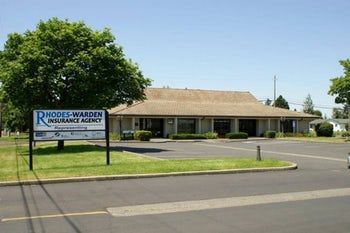Low enrollments and low contributions not only mean that you’re not getting your money’s worth out of your administrative dollars; they can also translate into decreased employee loyalty and failure of nondiscrimination tests. Following are five common retirement plan problems and how you can solve them.
Problem 1: Lack of Participation
One study reports that 56 percent of private sector workers had access to a defined contribution (DC) plan in 2006, but only about 40 percent participated. Younger workers and low-income workers are less likely to participate.
Solution: Automatic Enrollment
Several experts interviewed by the U.S. Governmental Accountability Office (GAO) noted that automatic enrollment increases participation because workers who fail to make an active decision will participate by default. Many plan sponsors have adopted automatic enrollment features over the last few years.
The Pension Protection Act of 2006 has made it easier for employers to adopt an automatic enrollment arrangement. You can decide which classes of employees will be subject to auto-enrollment: for example, you can auto-enroll all employees, all full-time employees or only non-union employees. Plans must adopt an amendment and provide affected employees with proper notice describing the features of the plan, including default elective deferrals, or the percentage of the employee’s pay that will be contributed to his/her account. Your plan must also give participants an opportunity to make (or change) a cash or deferred election at least once during each plan year.
Other Solutions: Information and Education
Do you promote participation in your DC plan? Do employees have easy access to information on the plan, as well as to general information on retirement savings, such as retirement calculators? If not, please contact us for suggestions.
Problem 2: Inadequate Contributions
Pension experts say it takes contributions between 12 and 20 percent of pay to achieve adequate retirement income from a DC plan. However, many workers contribute much less. A study by an investment management firm found the median worker contribution in 2007 was 6 percent among the plans it managed, and many employers made no contributions to these plans.
Solution: Automatic Escalation of Contributions
Combining automatic enrollment in DC plans with automatic escalation of contribution rates can help solve this problem. Without automatic escalation, automatic enrollment may lead to insufficient retirement income because employers may set a low default contribution rate for workers, such as 3 percent or less, and many workers will remain at the default level.
As with automatic enrollment, plan sponsors implementing automatic escalation provisions must provide notice to employees and give them adequate opportunities to opt out or change contribution percentages.
Problem 3: Inadequate Investment Returns
In a DC plan, the employer must provide participants with a range of investment options and workers allocate funds among those options according to their individual situations. If investments do not perform well, workers will have less money in their DC plans to provide retirement income.
Solution: Use Life Cycle Funds as a Default Investment
Standard financial theory recommends that individuals shift investments from riskier assets, such as stocks, to more stable assets, such as bonds, as they near retirement. However, one study shows that nearly one in four individuals between the ages of 56 and 64 had more than 90 percent of their 401(k) account balance invested in stocks at the end of 2007. A sharp drop in the stock market, such as the 37 percent fall in the S&P 500 in 2008, can be devastating for these workers, who have few years before retirement to recoup losses.
Life cycle funds automatically adjust the allocation of stocks and bonds according to the individual’s age and expected retirement date. However, experts caution they are not a complete solution and are still evolving.
Problem 4: Overinvestment in the Employer’s Stock
FINRA, the independent securities firm regulator, says, “…an adequately diversified portfolio should have no more than 10 to 20% of total investment assets in company stock. If you concentrate much more than that in company stock, especially in a 401(k) plan where there are trading restrictions, you may expose yourself to more company risk than it is wise to incur.”
Solution: Education
While the Employee Retirement Income Security Act of 1974 (ERISA), restricts defined benefits plans from investing more than 10 percent of assets in company stock, there is no similar restriction on 401(k) plans. Employees can benefit from education that alerts them to these and other investment risks.
Problem 5: High Fees
Investment fees, charged by companies managing mutual funds and other investment products, account for the largest portion of 401(k) plan fees. Workers typically pay these fees. A September 2009 report by Morningstar, Inc., found the average mutual fund fees vary widely, from 0.19 percent to 1.82 percent, a difference of 163 basis points.
Administrative fees, which cover the cost of activities carried out to maintain participant accounts, generally account for the next largest portion of plan fees. Although employers often pay the administrative fees, workers bear them in a growing number of plans.
Over the course of a worker’s career, fees may significantly decrease retirement savings by lowering the net investment returns. Although seemingly insignificant, a 1 percentage point difference in fees can substantially reduce the amount of money saved for retirement. An individual 45 years old who leaves $20,000 in a 401(k) account for 20 years would have an ending balance of about $70,500 with an average annual investment return of 7 percent minus a 0.5 percent charge for fees. However, if returns remain 7 percent but fees increase to 1.5 percent annually, that $20,000 will grow to only about $58,400 over 20 years—a difference of about 17 percent.
Solution: Opt for Low-Fee Plans
The fee information employers are required to disclose is limited and does not provide workers with easy comparisons between fees charged for different investment options. Employers can assist their employees by comparison shopping and selecting a plan provider that charges low administrative fees and a variety of low-fee investment options. Other solutions include educating employees on the impact high fees can have on their account balances.







